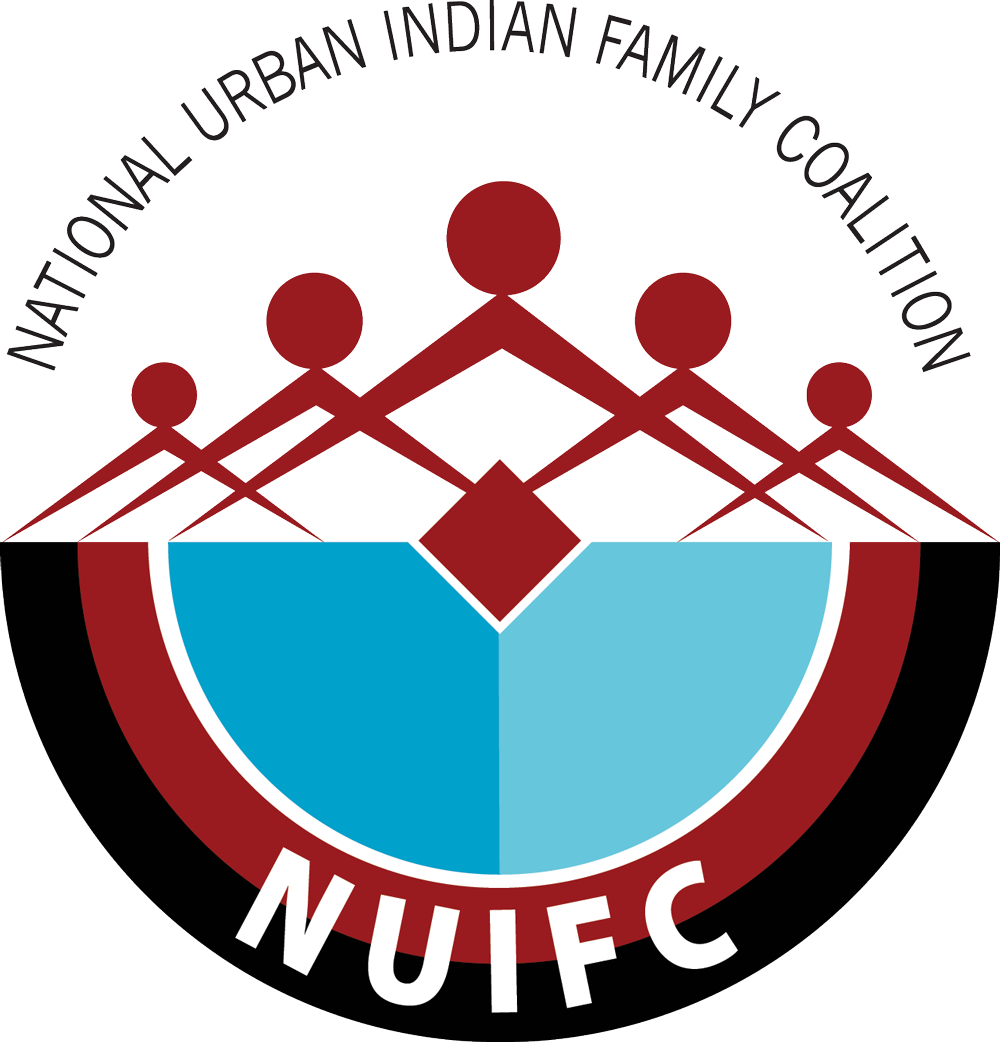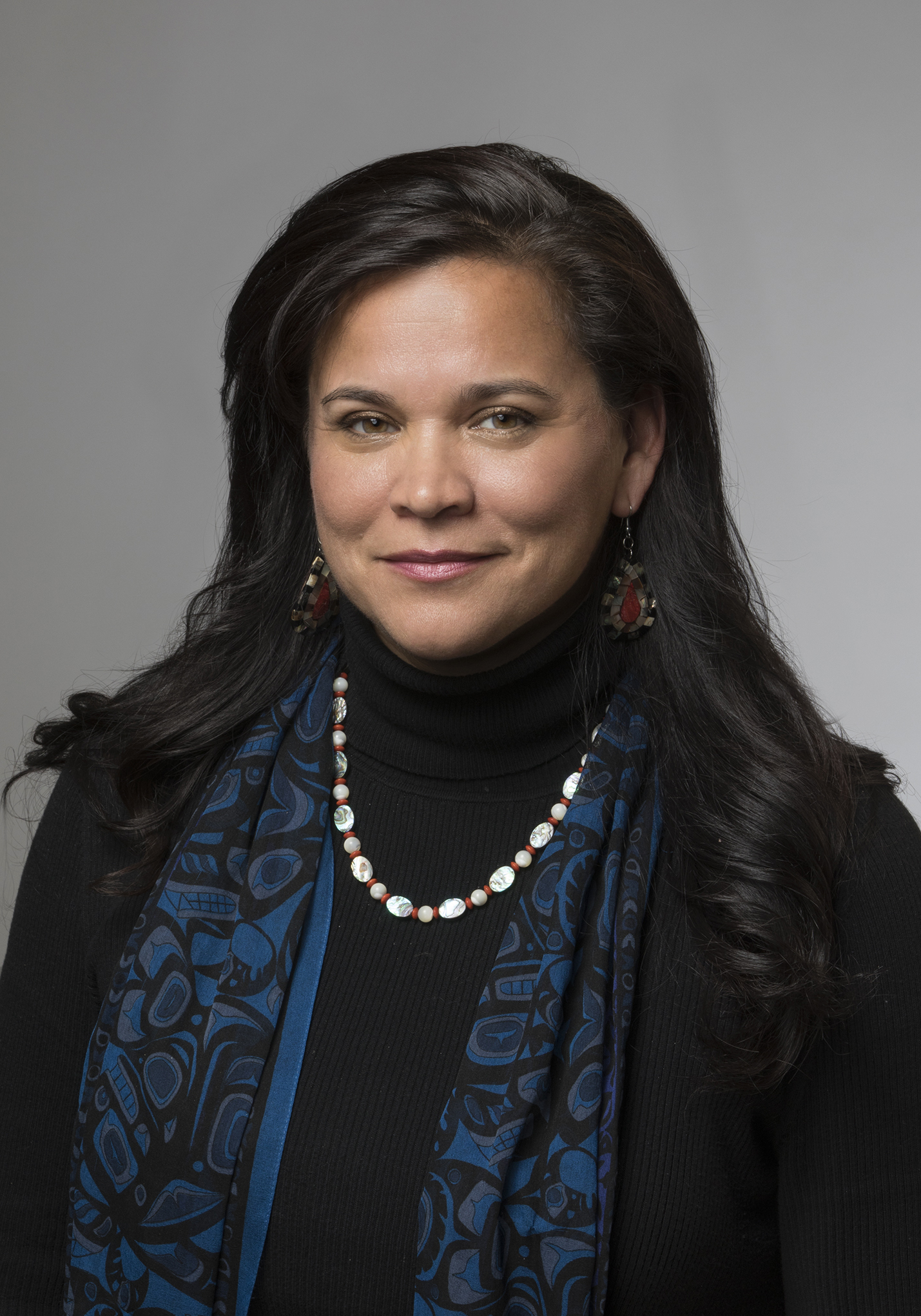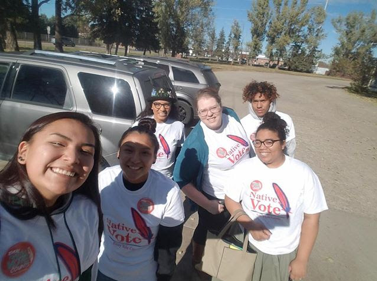NUIFC eNewsletter // December 2018
Update from the NUIFC Executive Director
Janeen Comenote, Executive Director
National Urban Indian Family Coalition
As 2018 winds to a close and the holiday season is once again upon us, the National Urban Indian Family Coalition (NUIFC) looks back at the whirlwind of activity and the triumph of this year’s electoral season with great pride. This electoral season saw an unprecedented level of voter engagement all across the nation and with it, unprecedented Native voter engagement.
With a majority of Native people now living in urban areas, the NUIFC is proud to have been able to contribute to this historic electoral season with the infusion of resources on the ground in 17 cities and states including Alaska, Idaho, Seattle, Portland, Spokane, Denver, Albuquerque, Phoenix, San Antonio, Oklahoma City, Kansas City, Indianapolis, Chicago, Minneapolis and Bismarck. Knowing there was so much at stake this election, our participant urban organizations were nothing short of astonishing in their accomplishments during the last six weeks of the electoral season. We saw a range of Get Out the Vote (GOTV) activities that included door knocking, phone banking, voter registration, Public Service Announcements (PSA’s), public transportation signage, candidate forums and transportation to and from polling stations. These combined efforts made the urban Native vote a robust and visible presence in each city they operated in.
Representation matters! For Native communities, 2018 was the year of the Native candidate, and in particular, for high profile urban Native candidates, we saw historic elections of Native women winning their seat in public office. Two hundred twenty-nine years after the founding of Congress, we participated in history to elect our first two Native women to federal office: Congresswoman Sharice Davis in Kansas City and Deborah Haaland in Albuquerque. As an Urban Native community, we elected Ruth Ann Buffalo in Fargo, North Dakota, who replaced the legislator who drafted anti-Native voter suppression in North Dakota and saw the first Native woman Lieutenant Governor elected in Minnesota in Peggy Flanagan.
As we look towards the 2020 election, the NUIFC is very excited to continue to engage urban Native voters, often the swing vote, in cities across America. We began this journey with the 2018 election and in 2019 and beyond, will continue to advocate and work closely with urban Indian organizations throughout the country to make sure that we are no longer invisible and that we have a voice in the electoral process.
Klecko Klecko (Thank you),
Janeen Comenote
A Note from NUIFC Communications Coordinator, William Miller
This election season was nothing short of hard work, dedication, and indigenous resiliency. On November 6, 2018, the nation went to the ballot box and casted midterm electoral votes determining who will represent us locally, regionally, and nationally for the coming years. And, our indigenous voice shined beyond the ballot.
I served as your Communications coordinator for the National Urban Indian Family Coalition (NUIFC) during the 2018 Urban Indian Voter Engagement initiative project. I had the unique opportunity to serve on the Get out the Vote initiative within 17 urban Native American cities nationwide. This allowed me the ability to have conversation and engage with people in each state, on the ground doing the incredible work of engaging native people to register to vote for the first time, educate voters on what it means to cast their vote, and to turn out to vote. All of the cities that we worked with turned out in remarkable ways to make sure our people were represented in a way that will have a lasting, historical, and deliberate impact for many years.
Historically, Native American people have experienced the betrayal of governments, their rights ripped away from them, and overtime, historical governmental efforts to silo and marginalize our communities. In October, the North Dakota Supreme Court upheld a lower court decision to require voters to show identification with a residential address.
In North Dakota, many Native Americans live on rural reservations and do not have traditional street addresses, therefore, receive mail at P.O. boxes rather than at their home – this was simply not enough for the courts. This decision would continue to have electoral impacts throughout Indian Country in North Dakota, as the decision is deliberate in suppressing the voice and the vote of Native American people.
With all of this in mind, not only were we able to build strong partnerships nationwide, we were able to stand up for injustices, for our community, and for the future of our people. I am thrilled to continue building collective voter engagement capacity nationwide within our Urban Native communities – the work has just begun. We are strong, we are resilient, we are voters!
Wado (Thank You),
Voter Engagement Highlights
Since we can’t highlight all of the 17 cities,here is a quick glimpse at the depth and breadth of the Voter Engagement work our centers conducted this electoral cycle. We are deeply appreciative of all of the hard work and dedication that each and every center did to engage our native voters – you all are incredible.
Bismarck, North Dakota
The Sacred Pipe Resource Center (SPRC) in Bismarck, ND, focused Get Out the Native Vote efforts in reaching the off-reservation Native population, providing accurate information about voting in the State, and providing first-time voters with a memorable experience.
SPRC hired several Native Vote Outreach Workers who headed door-to-door in predominately Native neighborhoods to provide information about voting and encourage Native voters to get to the polls on election day. The project trained a total of 24 paid and volunteer outreach workers, ranging in ages from 18 to nearly 70. The Native Vote Outreach Workers worked in pairs, easing fears of potential voters and providing flyers with information about the voting process, FAQs, and places to get more information.
SPRC also utilized NUIFC Get Out the Native Vote funds to host two community meetings about voting. One event focused on providing information about several key measures on the North Dakota ballot. The other event combined Halloween, traditional round dance/49 singing, and voting information to provide a “fair” atmosphere. The event also featured a mock vote of the Bismarck-Mandan Native population.
Finally, SPRC provided the “Native Vote in Style” event and transported 18 mostly first-time and infrequent voters to the polls on election day in a Hummer-style limousine. Participants said the event helped them be far less nervous about voting and made them life-long voters!
For more information on the Sacred Pipe Resource Center, visit: http://sacredpipe.net/
Minneapolis, Minnesota
As we approach the conclusion of the 2018 calendar year, the American Indian OIC (AIOIC) now looks back on its Autumn Get Out the Vote/Integrated Voter Engagement Initiative with great pride. Within the state of Minnesota, the 2018 election was of particular importance. Several key offices were being pursued by first time candidates as many incumbents had either chosen to retire or had stepped down from their post. Additionally, with specific regards to the Minnesota Governor’s race, both major parties included an indigenous woman on the ticket for the position of Lieutenant Governor which would also be a historic first for our state (the eventual winner was Democrat Tim Walz, whose selection for Lieutenant Governor was Peggy Flanagan – an enrolled member of the White Earth Nation of Anishanabe/Ojibwe). This election cycle would prove to be one of sweeping change – irrespective of the outcome.
Operationally, our organization ran concurrent programs of early voter registration (through October 17th, 2018), the securing of individual “Pledges to Vote” (which was then used to catalyze our escorting of voters to the polls), ongoing Voter Education Classes reviewing key issues and the actual process of voting, a Community Forum Feast event that brought all major candidates into the same space as our people for one evening, and an ongoing voter direct escort services to take community members to polling stations for both early voting and on election day.
As a result of our efforts, over 300 community members went through our Voter Education classes, nearly sixty individuals registered early to vote, over 250 “Pledge To Vote” cards were completed and signed by community members, nearly 150 community members attended our Community Forum Feast event (hosted in partnership with the Little Earth of United Tribes Housing complex) and over 200 community members actually cast their ballots at the polls after directly participating within our agency’s voter direct escort services.
We look forward to the impact we can have on the next election cycle, using the time that is now afforded while building off of the wisdom gleaned from the experience of this work.
For more information on the American Indian OIC (AIOIC), visit: http://aioic.org/
Phoenix, Arizona
The Phoenix Indian Center successfully coordinated a 2018 voter engagement campaign ranging over six weeks. This non-partisan effort was designed to build capacity, develop a network of organizations engaging American Indians and Alaska Natives to vote. Phoenix Indian Center proudly partnered with Native American Connections, Inter Tribal Council of Arizona, United National Indian Tribal Youth (UNITY), Arizona State University, Maricopa Community Colleges, the Phoenix Indian Medical Center, Heard Museum, the Hopi Education Endowment Fund, Native Health, Tucson Indian Center and Native Americans for Community Action. Arizona is home to the nation’s third-largest American Indian population - a group that grew by 11 percent to 371,605 people, from 2010 to 2016, according to census figures on those individuals who claimed only Native American ancestry. Key issues that tend to drive American Indian people to the ballot box include education, energy, water, environmental impact issues, Indian child welfare, Federal budget and spending and tribal government sovereignty.
Phase one consisted of voter registration while phase two focused on voter education and getting people to the polls. Approximately 350 individuals were registered to vote with 200 also being registered as Navajo Nation tribal voters. Information about the voting was shared at over 49 community outreach events. Six different video PSA’s were created and shared via social media channels and websites throughout the campaign. Marketing and promotional materials consisting of bumper stickers, fans, magnets and more were provided to all GOTV partners, tribal businesses, nonprofit and grassroots organizations to distribute to the community. Phoenix Indian Center staff participated in phone banking organized by Inter Tribal Council of AZ. Efforts culminated in A first ever Get Out the Vote Rooftop Rally was held encouraging American Indians and Alaska Natives to vote on Election Day. Nine candidates vying for various seats attended the rally along with well over 175 community members and Governor Lewis from the Gila River Indian Community. Representatives from Congressman Greg Stanton’s campaign stated “It looks like you do this often – reaching out to the community. Nice Job!” Daniel Valenzuela, one of three Phoenix City Mayoral Candidates that participated, stated “I am truly honored to be here to talk with your community.” Lastly, at the outdoor rally, the Phoenix Indian Center aired the FNX Special Report: The Native Vote, a recorded segment focusing on American Indian voting with several Arizona panel participating. Patricia Hibbeler, CEO of the Phoenix Indian Center, stated “Our comprehensive team rallied quickly for a strong six weeks and we are poised and ready to continue this work into the future.”
For more information on the Phoenix Indian Center, visit: https://phxindcenter.com/
For more information, please contact:
Janeen Comenote
Executive Director, National Urban Indian Family Coalition
jcomenote@nuifc.org, | 206-551-9933
William Miller, Communications Coordinator, National Urban Indian Family Coalition
WilliamM@nayapdx.org | 971-288-7783

















